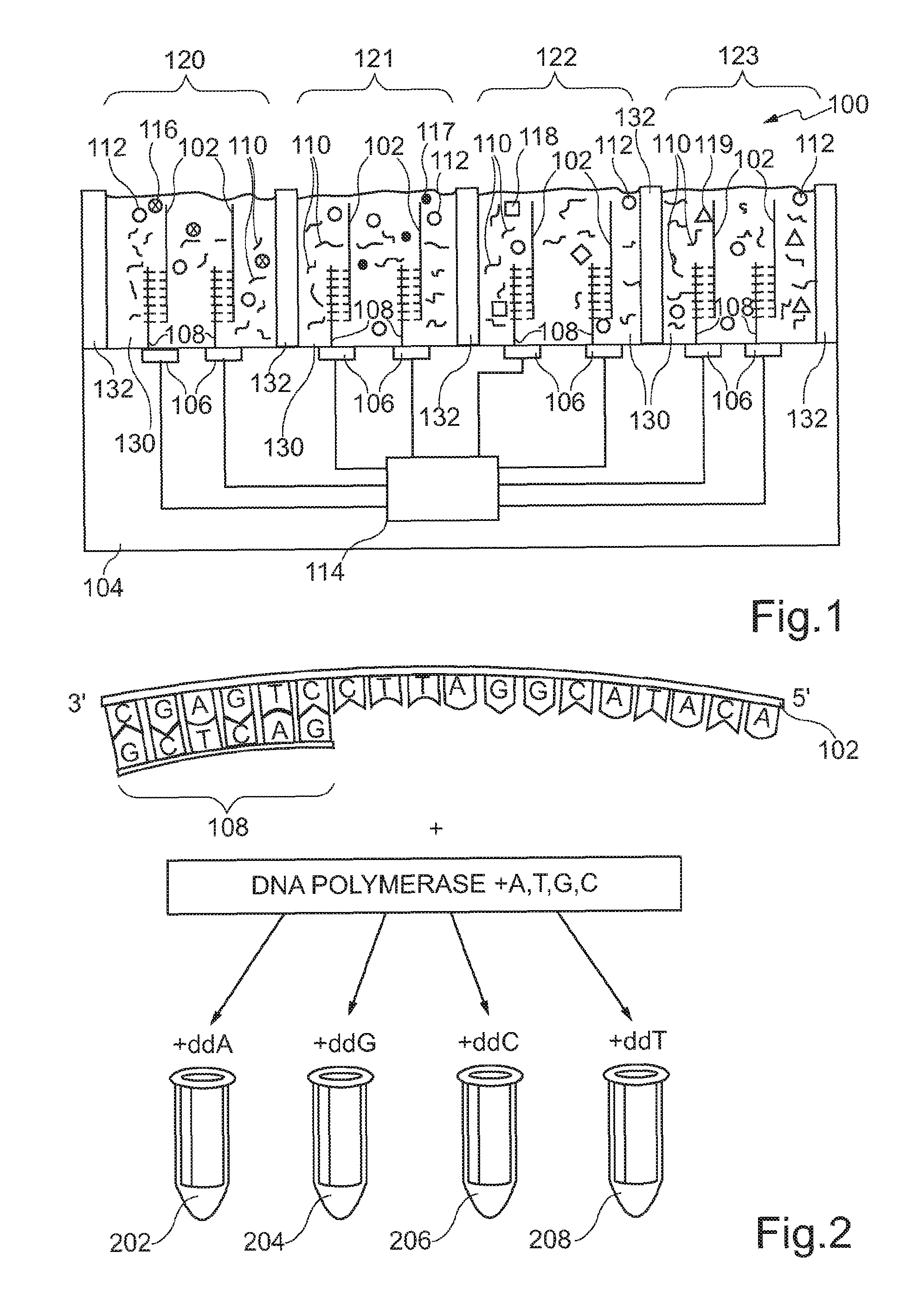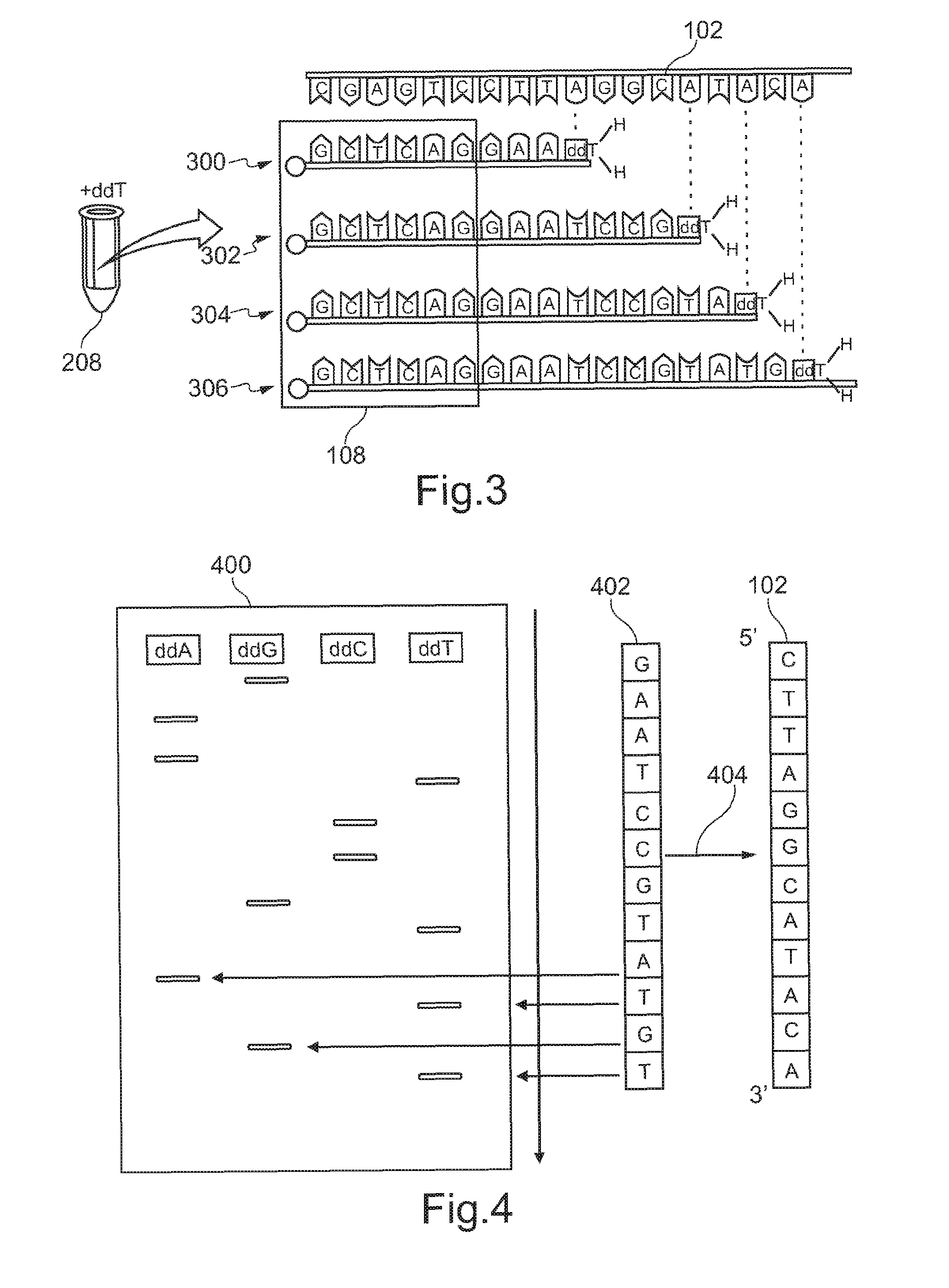Biosensor device and method of sequencing biological particles
- Summary
- Abstract
- Description
- Claims
- Application Information
AI Technical Summary
Benefits of technology
Problems solved by technology
Method used
Image
Examples
Embodiment Construction
[0075]The illustration in the drawing is schematical. In different drawings, similar or identical elements are provided with the same reference signs.
[0076]In the following, referring to FIG. 1, a biosensor device 100 for sequencing DNA molecules 102 according to an exemplary embodiment of the invention will be explained.
[0077]The biosensor device 100 comprises a silicon substrate 104. A plurality of sensor active regions 106 is provided on a surface of the silicon substrate 104. On each of the sensor active regions 106, a primer molecule 108 is immobilized, which is an oligonucleotide being complementary to an end portion of the DNA sequence 102. The primer 108 has a sequence that is complementary to an end of the sequence of the biological particles 102. Thus, an upper portion of the DNA 102 remains exposed to a fluidic environment 130 in which nucleotide bases 110 (A, T, C, and G) are present as well as a DNA polymerase 112 as a replication enzyme.
[0078]Electrical signals detecte...
PUM
| Property | Measurement | Unit |
|---|---|---|
| Nanoscale particle size | aaaaa | aaaaa |
| Size | aaaaa | aaaaa |
| Capacitance | aaaaa | aaaaa |
Abstract
Description
Claims
Application Information
 Login to View More
Login to View More - R&D
- Intellectual Property
- Life Sciences
- Materials
- Tech Scout
- Unparalleled Data Quality
- Higher Quality Content
- 60% Fewer Hallucinations
Browse by: Latest US Patents, China's latest patents, Technical Efficacy Thesaurus, Application Domain, Technology Topic, Popular Technical Reports.
© 2025 PatSnap. All rights reserved.Legal|Privacy policy|Modern Slavery Act Transparency Statement|Sitemap|About US| Contact US: help@patsnap.com



